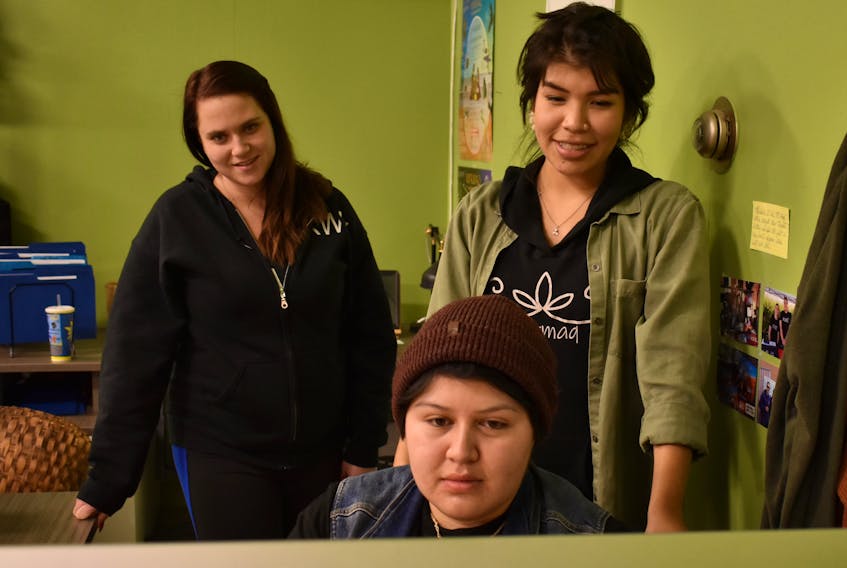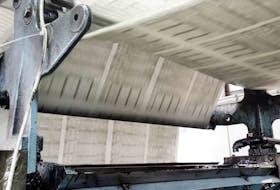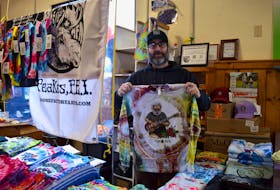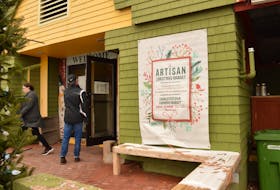CHARLOTTETOWN, P.E.I. — The first creation of Mi’kmaq Printing & Design was simple — the word KWE’ in capital letters, which appeared on its products.
In the Francis Smith Mi’kmaq dialect, it means hello.
That was back in 2018, and since then, the company has continued to invite conversation and promote Mi’kmaq culture through its products.
On Nov. 12, the Mi’kmaq Printing & Design website launched, and it has already allowed the business to continue the conversation despite not being able to sell any products in person due to the COVID-19 pandemic, said partnership and social enterprise developer Betty Gordon.
“When we can’t be in front of people, we felt that the website had to be the place that we could be there.”
Even before the pandemic forced it online, the team had plans for a website. COVID-19 finally gave them the time, said IT and digital marketing lead Misiksk Jadis.
“From the start, people were like, ‘do you have a website?’ ”
More than clothing
Beyond selling product, the site features descriptions of the designs, outlining the cultural significance of each.
In time, the team hopes to incorporate more of that cultural work, including the Mi’kmaq names for colours, and having the site available in both Mi’kmaq dialects, said promotions lead and cultural educator Deidre Augustine.
“That’s a huge part of our social outcome is bringing that awareness to our culture, our story.”
Augustine and the team continue to learn from elders, which informs their designs.
Another key part of that is going to be the introduction of a resource page to share, said Jadis.
“Then, we can cite and source everything we’ve learned, so we’re not hoarding the information.”
Conversations
In any other year, the team would have set up shop at different events and markets across the Island, selling products and engaging the public in discussion, said Augustine.
“Pop-ups are more intimate, so they could stay there, and we could just talk and talk and talk.”
The move online hasn’t stopped that sort of in-depth conversation, though, said Jadis, who spent over 40 minutes talking to someone over the phone, she said.
“It was just him telling me how happy he was to have this option to learn about the designs and hear from us.”
The website also allowed them to carry on the conversation with people outside P.E.I., said Jadis.
“We’ve been getting orders to Seattle and B.C., Louisiana and we’ve sent a few to England and Ireland.”
Self-taught teachers
Everything the team members do involves learning and then sharing what they’ve learned.
Together, they have learned how to do all aspects of production, to use point-of-sale system Shopify, to create designs and now to create and operate a website storefront.
While they have had some mentorship, much of it has been done on the fly among themselves, and it has empowered them, said Gordon.
“Because we come from a culture of this group where we’re like, ‘we’re going to learn it, so we’re not relying on other people,’ it takes a little longer … but this group then knows what needs to be done and they make the decisions.”









